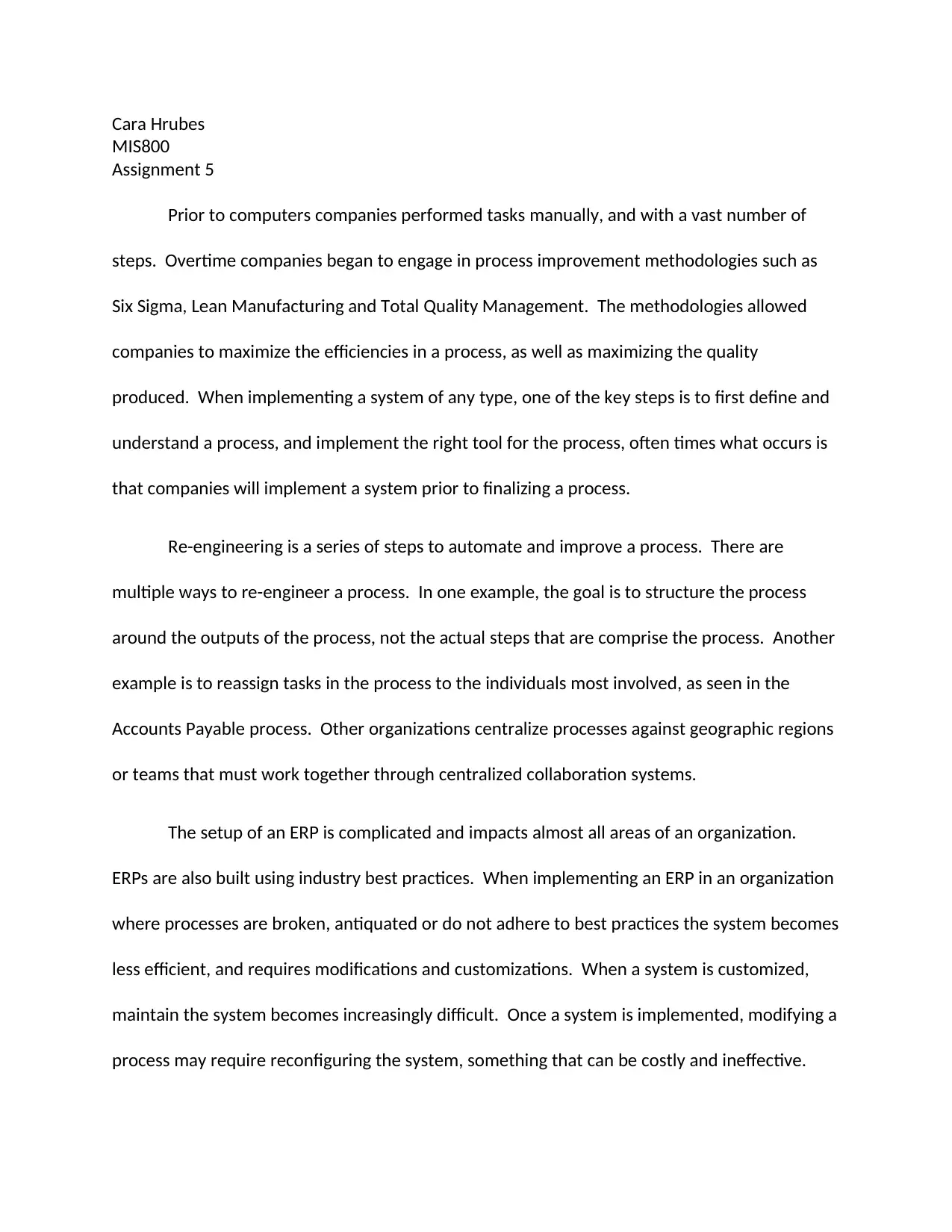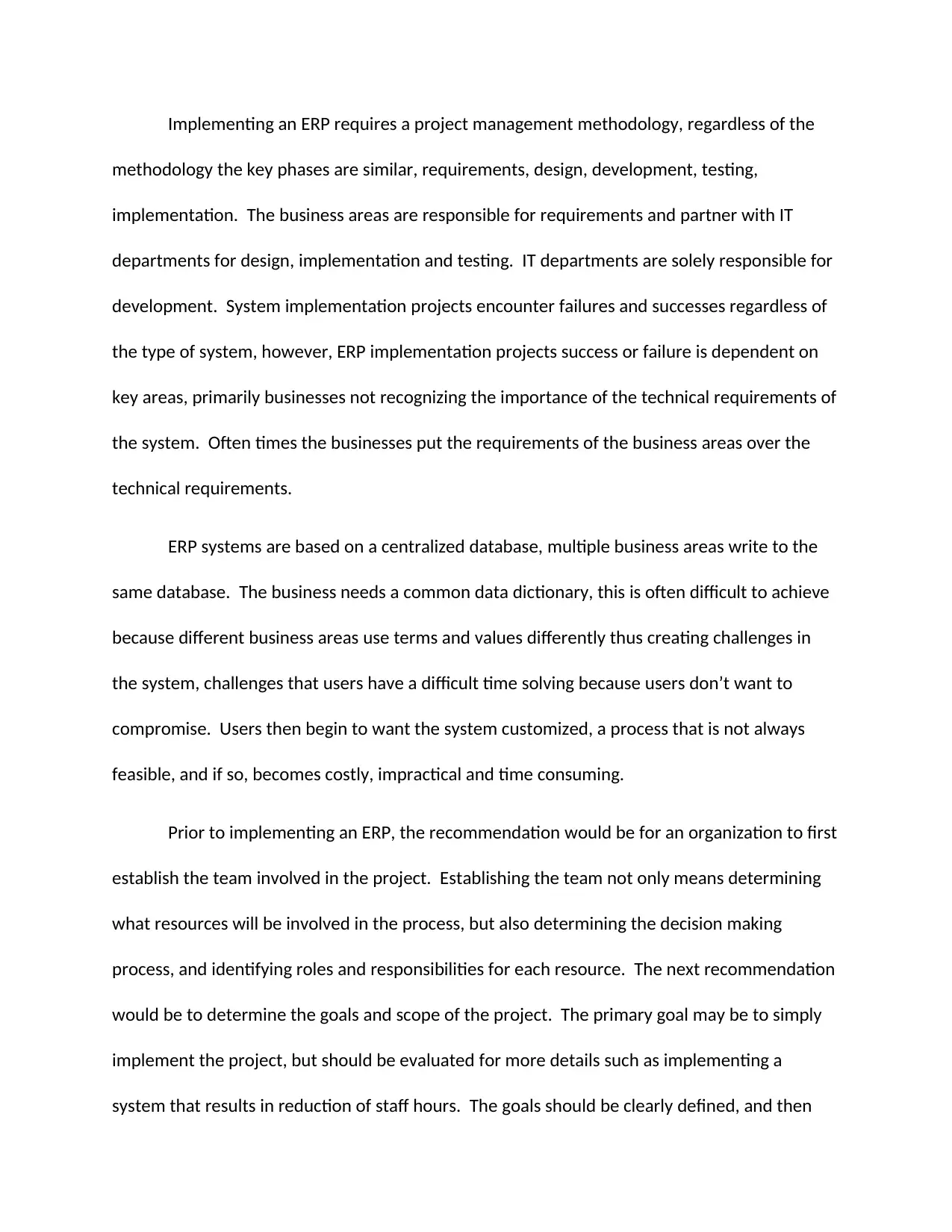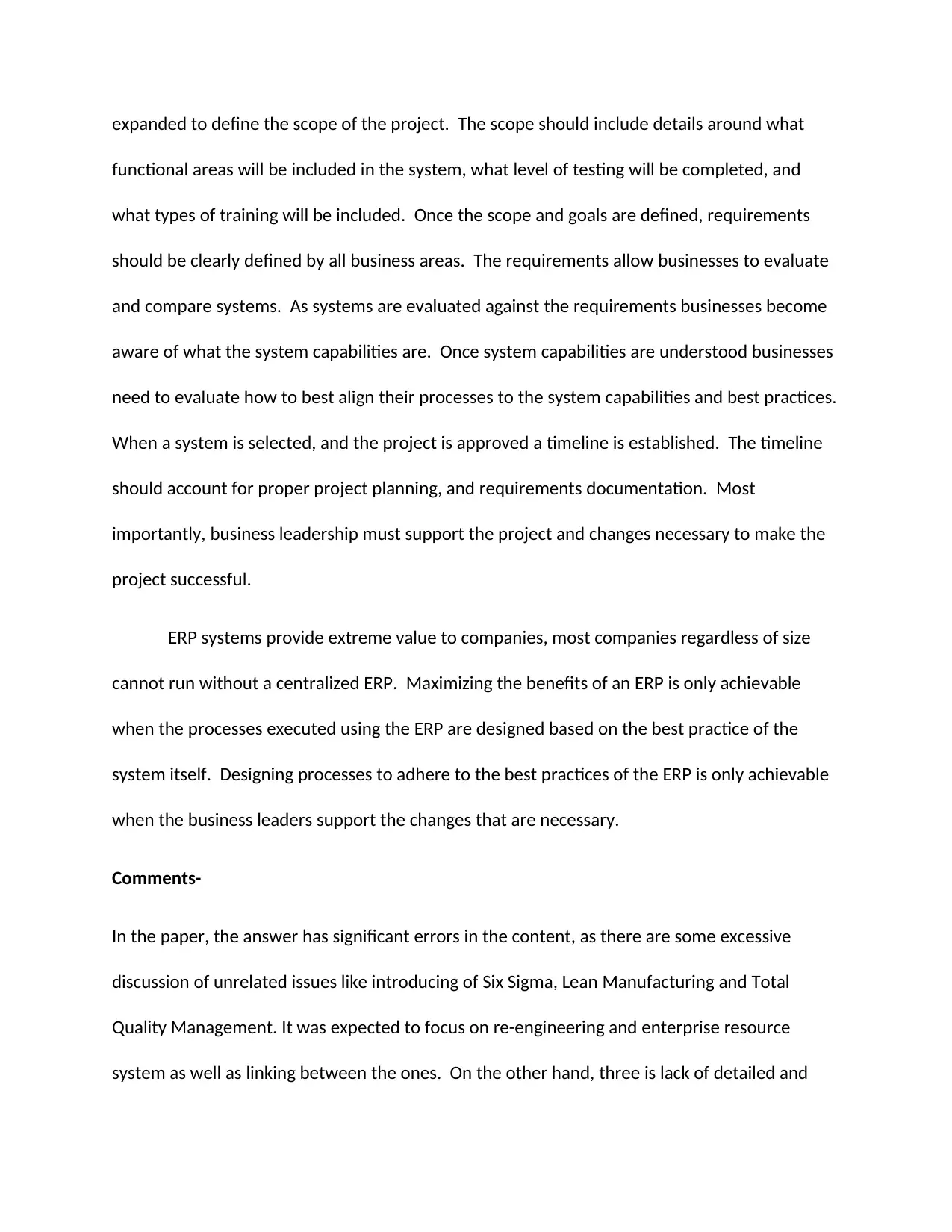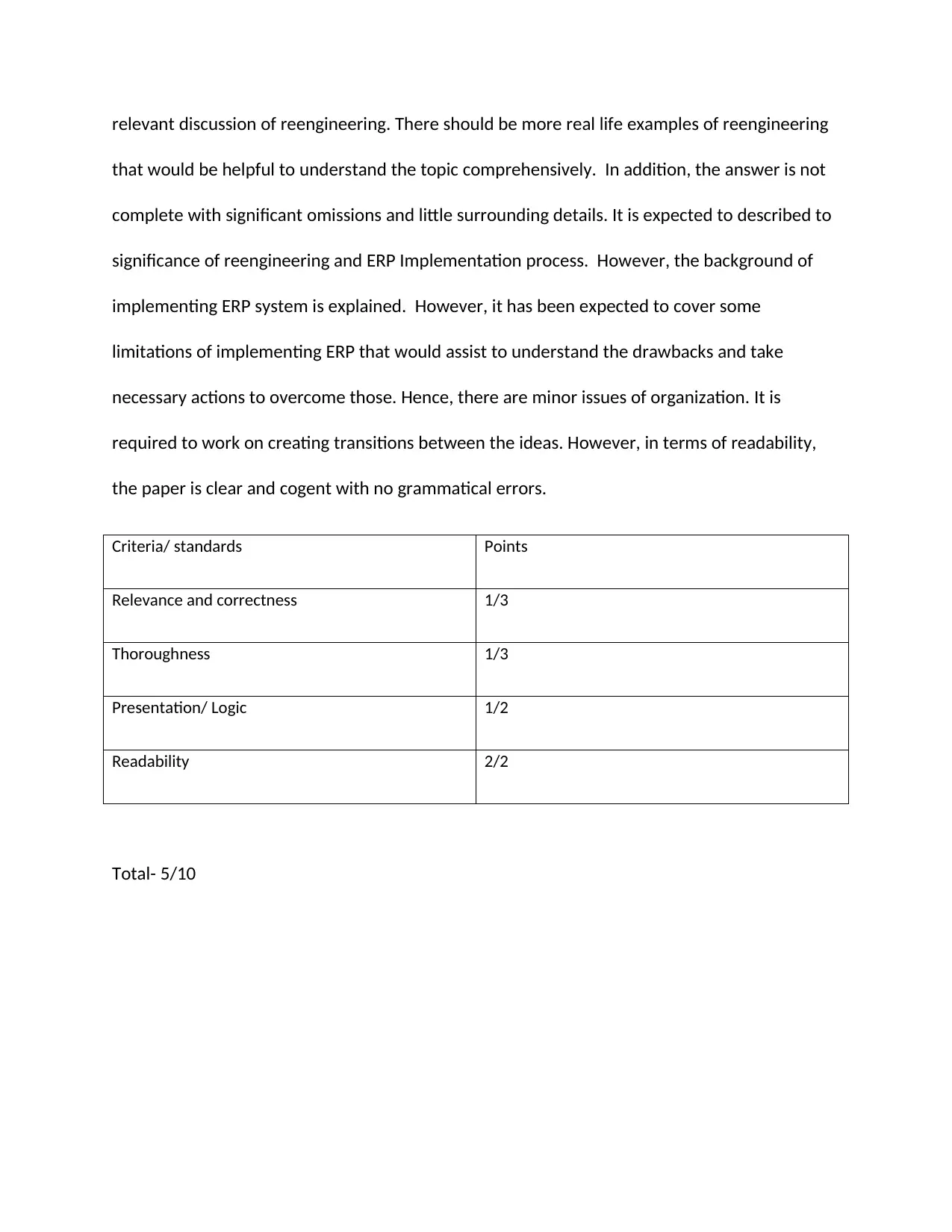The Role of Re-engineering in ERP System Implementation - MIS800
VerifiedAdded on 2023/05/29
|4
|1057
|465
Essay
AI Summary
This assignment solution discusses the importance of re-engineering in the context of Enterprise Resource Planning (ERP) systems. It highlights how companies initially performed tasks manually and then adopted process improvement methodologies. Re-engineering is presented as a series of steps to automate and improve processes, emphasizing structuring processes around outputs and reassigning tasks to involved individuals. The essay also covers the complexities of ERP implementation, the impact on various organizational areas, and the challenges posed by broken or antiquated processes. It emphasizes the need for a well-defined project management methodology, the importance of business and IT collaboration, and the criticality of a common data dictionary. The solution concludes by recommending that organizations establish a project team, define goals and scope, clearly define requirements, and align processes to system capabilities and best practices, all with the support of business leadership to maximize the benefits of ERP systems. The document has been contributed by a student and is available on Desklib, where students can find a wide array of study resources.
1 out of 4











![[object Object]](/_next/static/media/star-bottom.7253800d.svg)